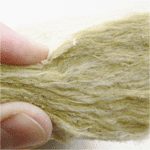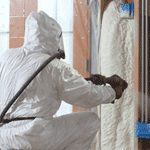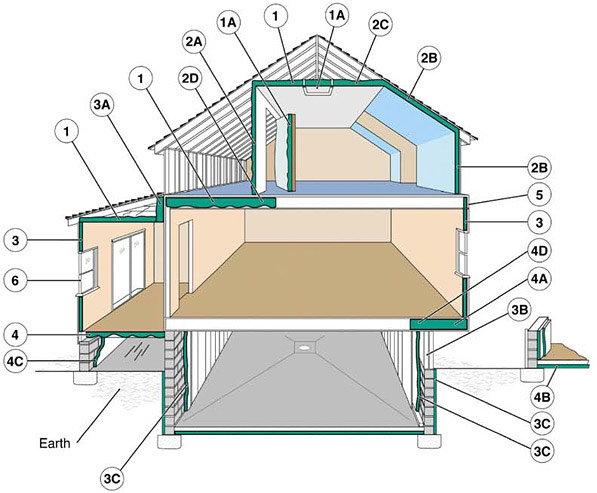Why Infrared Heating Works
Take 33 seconds to understand how our heaters work!
Health & Safety Benefits
Clean Heat
Reduces dust – Unlike forced air heating systems, our infrared radiant heating panels do not blow dust or allergens.
UL Approved
No emissions – Heating Green’s infrared radiant heaters do not release any emissions, chemicals or pollutants — meeting all UL safety standards.
Soothe Aches
Therapeutic relief – Our infrared heaters produce radiant heat waves like the sun ~ transferring warmth to the body, gently increasing circulation providing pain relief.
Silent Operation
No distractions – a pleasant ambiance day and night. An area with no interruptions to pull our attention away from priorities.
Safety
We understand that safety is a top priority for you and your loved ones, and we are happy to address any of your safety concerns. All of our products are UL listed and approved, meaning they meet the UL safety standards.
Heating appliances are the second leading cause of house fires in the U.S. behind cooking accidents. This is often due to lack of proper maintenance or installation so whether you’re installing our cove heaters, deck & patio heaters or one of our many heating panels, it’s important to follow the correct procedures and ensure your installation complies with your area’s building codes.
Primary or Supplemental Heat Source
Infrared radiant heat can be applied as a primary or supplementary heat source to meet any heating need. Click below to see how heating panels can be used in conjunction with the following:
EMF (electromagnetic frequency)
Infrared heating panels are not source of strong EMF’s. For example a fluorescent light bulb will put out about 200mG of EMF’s where as at peak a SolaRay infrared heating panel will put out 3mG if you are only a couple inches from it, and 0.17mG at head height. To learn more about what EMF’s are, please see our About EMF page here.
Green Benefits, Savings, Zone-Control
Green Heat
Our radiant heating products are healthier than traditional forms of heat, as they do not blow dust or allergens and they don’t make noise. Heating Green heaters do not need filters, fuels, ducts or pumps that require seasonal cleaning and maintenance. Plus, most of our products are proudly made in the USA, are 99-100% recyclable, and our heating panel products are recognized by LEED ratings!
Energy Savings
Many of our customers have reported saving between 20 – 50% over conventional heating systems, including gas, oil, electric, and wood burning systems. (US DOE/NAHB studies have shown a 33% savings over heat pumps and 52% savings over baseboard heating when using heating panels.) Plus, most of our products require zero maintenance, and installation costs are often less than traditional forced air heating systems and up to 75% less than in-floor radiant heating.
Savings can also vary depending on your local utility charges. To find how much electricity is charged in your area, please visit Electricity Local’s website.
Zone Control
You can think of infrared radiant heating similar to lighting in a home. All homes have a light and light switch for each zone or room. The same concept applies with infrared radiant heating: By using a manual or programmable thermostat, you can adjust the temperature in any given room based on the occupant’s comfort level. If you’re not using a room, you can turn the heat down or off. This method of heating saves you money while providing you sun-like-warmth in each room!

Comparison to Conventional Heating Systems
Heating Green
Infrared Radiant Heating Systems
- Silent operation, a pleasant ambiance day and night
- Emit sun-like warmth to the occupants and objects in the room, even the floors!
- Maintenance-free
- Mount on the ceiling or high on the walls, no usable space is taken up
- Often save %30-40 operating cost compared to conventional heating systems
- ~30-year life-cycle
- Are conducive to a healthy indoor environment
- Silent operation, a pleasant ambiance day and night
Conventional
Heating Systems
- Noisy, which interrupts the ambiance in a room and sleep
- Warms a room, but the ceiling is the warmest place due to warm/hot air rising
- Requires maintenance
- Often in the way of furniture or curtains/drapes
- Often expensive to operate
- Often supplemented with plug-in “space heaters” which can be dangerous and have lead to home fires and deaths
- Short life-cycle, often less than 15 years, requiring maintenance
- These can lead to unhealthy indoor air quality, triggering asthma, allergies, etc.
What does this all mean?
In short, conventional systems like forced air, baseboard, and wall heaters only heat the air. Because warm air rises in the presence of cooler air, the heated air can be easily sucked away by drafts or wind and must be replaced frequently by more heated air in order to sustain ambient comfort. This all amounts to wasted energy and higher heating bills.
The Infrared Spectrum
Short wave infrared: The sun, which has a surface temperature of 10,000F and is obviously visible to the naked eye.
Medium wave infrared: A good example of this is our quartz heaters which have a faint glow and a maximum surface temperature of ~900F.
Longwave infrared: The remainder of our infrared heaters, used for indoor applications (non-glowing) fall into this category, with a surface temperature range of 170-425F.
NOTES:
- Our body gives off heat at a wavelength of around 12 microns and our IR heaters emit a wavelength of 7-12 microns, therefore the body easily absorbs the heat in this wavelength, which easily heats water molecules (the human body is made up of ~60% water), and penetrates well below the skin, which is optimal for heating people at room temperature or hot yoga enthusiast alike!
- Think of infrared light being on a spectrum from short wave to long wave, and visible light/temperature. The shorter the wave, the higher the temperature, the longer the wave, the lower the temperature.
Insulation
Properly Insulated Space
Insulation is ultimately the most important component of any heating system. Whether you’re using a furnace, electric wall heaters or radiant heating panels, a properly insulated space is going to make your heaters work a lot better and ultimately save you money.
Understanding Insulation R-Values
Insulation r-values can be confusing if you don’t understand them. Put simply, r-values are a rating of how much thermal resistance insulation has. Insulation with a high r-value rating will resist heat rather than conducting it. What this means in layman’s terms is the higher the r-value ratings on your insulation, the better it will retain heat and maintain temperatures.
How Much Insulation do I Need
When it comes to insulation we typically tell people that more is better. Having more insulation and higher R-values will help retain warm temperatures in the winter and cool temperatures in the summer so you’re saving money on energy costs year-round.
Click here to find the insulation minimum requirement in your state and county.
In the average American home, 45 percent of the utility bill can be attributed to heating costs. With proper insulation, you can decrease your heating bill while increasing the warmth and comfort in your home.
There are some general guidelines that outline how much insulation you should have in your space. Things like your location, elevation and average temperature range will play a big factor into how much you should insulate. A home in Phoenix, AZ is going to require less insulation than one in Buffalo, NY. The following map and chart from the U.S. Department of Energy provide a good guideline for how much insulation you will need in your area. You can also click here to find the minimum insulation requirement in your state and county.
Types of Insulation
The market is so flooded with options for insulation that deciding on one can be a daunting task. However, exploring the features and benefits of each can help narrow the choices down. Ultimately, it will come down to what will fit in your space, your budget and what R-values you need. Generally speaking, we suggest getting the most insulation you can. When it comes to insulation, more will always help maintain your desired temperatures and keep your heating bills down!
Batts

Batts are one of the most common types of insulation due to their ease of installation and relatively low cost. They are made to fit between joists and rafters. Batts insulation typically comes in blankets or will and can be made of a variety of materials such as fiberglass, wool, cotton and even soy. It’s a great choice for DIY projects.
R Values – 3.0-4.0 per inch (Depending on Material)
Common Uses – Walls, Foors, Ceilings
Blown-In

Blown-in or loose-fill insulation consists of fiberous strands of fiberglass or cellulose that are blown into ceilings or walls with a special machine. This type of insulation can be installed as a DIY project with rented equipment or you can hire a professional.
R Values – 2.2-3.8 per inch (Depending on Material)
Common Uses – Walls, Ceilings
Spray Foam

Spray Foam insulation is a type of liquid that expands into a foam when applied. It can be sprayed into walls, floors and ceilings and will fill those hard-to-reach nooks and crannies. While spray cans of foam insulation can be bought for insulating very small areas, such as around pipes and windows, professional installation is needed for larger applications.
R Values – 3.5-6.5 per inch (Depending on Material)
Common Uses – Walls, Foors, Ceilings
Structural Insulated Panels (SIPS)

SIPS consist of an insulating material, such as foam, sandwiched by particle board sheets. These sheets typically come in 4’x8’ configurations and are most often used for new construction. They are great due to their ability to insulate an entire wall, but can be expensive to install and to not lend well to remodels or retrofits.
R Values – 3.8-7.7 per inch (Depending on Material)
Common Uses – Walls, Ceilings
Where to Insulate
For optimal efficiency, your home should be insulated from the attic ceiling to the basement floor. For tips on where to concentrate insulation consider this graphic from the Department of Energy.
1: Unfinished Attic – Insulate between and over the floor joists and around attic access door (1a).
2: Finished Attic – Insulate between studs of knee walls (2a), between studs and rafters of exterior walls (2b), and ceilings with cold overhead spaces (2c). Extend insulation into joist space (2d).
3: Exterior Walls – Insulate walls between rooms, garages, storage areas (3a); above ground level foundation walls (3b); foundation walls in heated basements (3c).
4: Floors – Insulate floors above cold spaces such as vented crawl spaces and unheated garages. Also insulate floors cantilevered beyond the exterior wall below (4a); slab flors built directly on the ground (4b); foundation walls of unvented crawl spaces (4c). Extend into joists (4d).
5: Band Joists
6: Windows & Doors– Seal and caulk around windows and doors.

Seal Air Leaks
Another key component to properly insulating your home involves making sure it’s well sealed. Air leaks around plumbing vents, doors, windows and other culprits allow cold air to enter, and heated air to escape your home. By sealing these areas, you can improve your heating efficiency. The following image from energy.gov shows some areas prone to air leaks.
Do a Blower Door Test
You can test for air leaks in your home by doing a blower door test. A professional energy auditor will place “blower door” in your doorway. This is an instrument containing a fan that pulls air out of your home and a series of gauges to measure air pressure. This creates a pressure gradient between your home and the air outside, which allows the auditor to pinpoint air leaks in your home. This is illustrated by the graphic to the right, provided by energy.gov.
Energy Tips
Our heating products are a great start to conserving energy, but there is always more you can do to keep those utility bills lower.
Use a programmable thermostat – You can program these to turn your heaters on and off at set times. For example, you can set them to turn on before you get up in the morning, shut off while you’re at work and turn back on before you get home in the evening.
Insulation is key – Any heating or cooling system will perform best when well insulated. To get the best performance out of your heaters make sure your space is properly insulated. For more on how to insulate your home check out this link from energy.gov
Reduce drafts – Air leaks around plumbing vents, doors, windows and other culprits allow cold air to enter, and heated air to escape your home. By sealing these areas, you can improve your heating efficiency. The following image from energy.gov shows some areas prone to air leaks.

